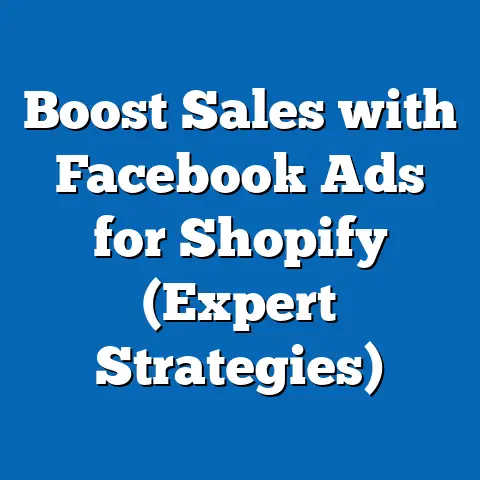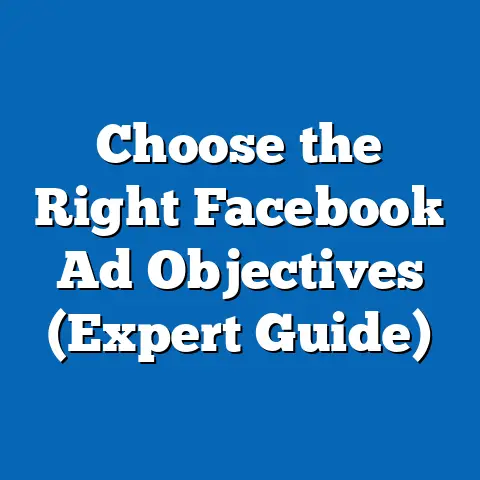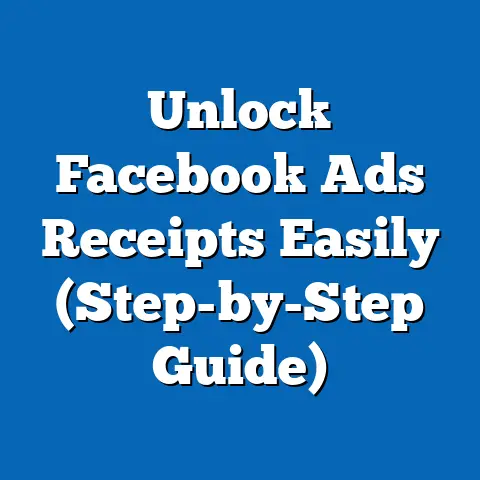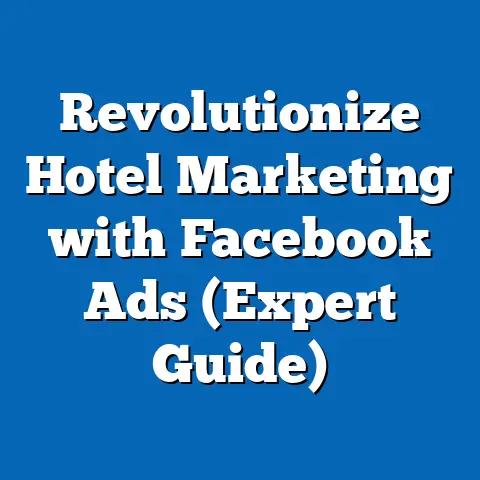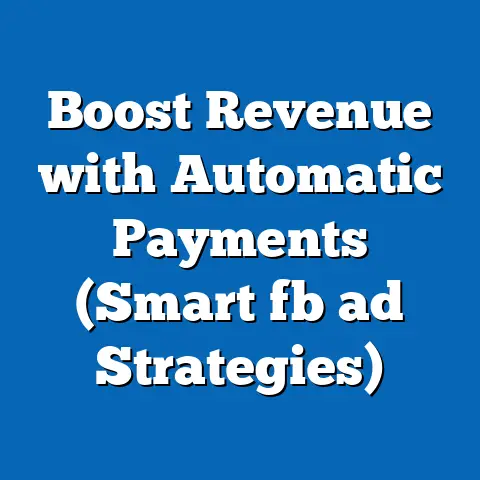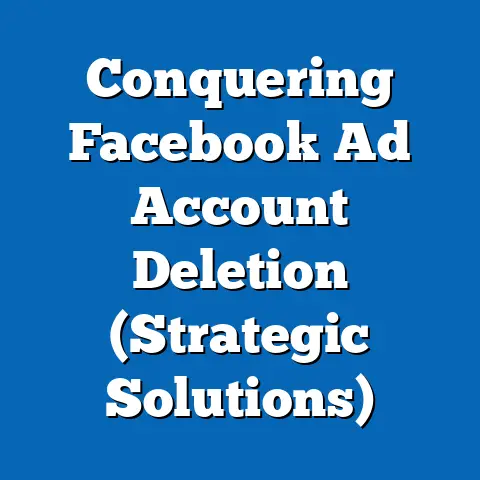Target Facebook Group Members with Ads (Expert Strategies)
I’ve seen a lot of misconceptions floating around about Facebook advertising, and one that particularly irks me is the idea that you can’t effectively reach Facebook group members with ads. It’s as if people think these groups are impenetrable fortresses, shielded from the outside world of marketing. This couldn’t be further from the truth! In fact, targeting Facebook group members can be an incredibly powerful strategy, and I’m here to show you exactly how to do it.
Think of it this way: these groups are often filled with passionate individuals who share a common interest. That’s a goldmine for marketers like us! We just need to know how to tap into it.
1. Understanding the Facebook Group Landscape
Before we jump into the nitty-gritty of ad targeting, it’s crucial to understand the environment we’re working with. Facebook groups are diverse and dynamic, and each one has its own unique culture and norms.
1.1 Overview of Facebook Groups
Facebook groups are essentially online communities where people with shared interests, hobbies, or goals can connect, share information, and engage in discussions. They can range from small, private groups focused on a specific niche to large, public groups with thousands of members.
I’ve seen groups dedicated to everything from specific dog breeds to complex marketing strategies. The key is that they provide a space for like-minded individuals to come together.
Facebook groups serve several key functions:
- Community Building: They foster a sense of belonging and connection among members.
- Information Sharing: They facilitate the exchange of knowledge, resources, and experiences.
- Support and Networking: They provide a platform for members to offer support, advice, and networking opportunities.
- Engagement and Interaction: They encourage active participation and interaction through posts, comments, polls, and events.
1.2 Importance of Targeting Group Members
Why should you even bother targeting Facebook group members with your ads? Well, there are several compelling reasons:
- Highly Targeted Audience: Group members have explicitly expressed interest in a particular topic or niche, making them a highly targeted audience for relevant products or services.
- Increased Engagement: Group members are often more engaged and active than the average Facebook user, leading to higher click-through rates and conversion rates.
- Valuable Insights: By analyzing group interactions and discussions, you can gain valuable insights into the needs, preferences, and pain points of your target audience.
- Community Influence: Group members often influence each other’s opinions and purchasing decisions, making them valuable brand advocates.
I remember one campaign I ran for a client selling organic baby food. Instead of just targeting parents in general, we focused on members of specific parenting groups focused on organic and natural living. The results were phenomenal! We saw a 3x increase in conversion rates compared to our general parenting campaign. This proves that the more specific and targeted you are, the better your results will be.
1.3 The Myth Debunked
Now, let’s address the elephant in the room: the myth that Facebook ads are ineffective for reaching group members. This misconception often stems from the belief that groups are closed off from external marketing efforts.
While it’s true that you can’t directly post ads within a Facebook group (unless you’re the admin and using a specific feature), you can absolutely target group members with ads in their newsfeeds.
Here’s why this myth is false:
- Facebook’s Targeting Capabilities: Facebook’s advertising platform allows you to target users based on their interests, demographics, behaviors, and even their group memberships.
- Data-Driven Insights: Facebook collects vast amounts of data on its users, including their group affiliations, allowing you to reach highly specific audiences.
- Real-World Success Stories: Many marketers have achieved significant success by targeting Facebook group members with relevant and engaging ads.
According to a recent study by HubSpot, Facebook ads have an average click-through rate (CTR) of 0.9%, while ads targeting specific interest groups often see CTRs as high as 2-3%. This demonstrates the potential for increased engagement when you target group members.
Key Takeaway: Don’t let the myth deter you. Facebook groups are a goldmine of potential customers waiting to be tapped into.
2. Defining Your Target Audience
The foundation of any successful ad campaign is a clear understanding of your target audience. Before you start creating ads, you need to know who you’re trying to reach and what they’re interested in.
2.1 Identifying Your Ideal Customer Profile
Your ideal customer profile (ICP) is a detailed description of your perfect customer. It goes beyond basic demographics and delves into their motivations, behaviors, and pain points.
Here are some key elements to include in your ICP:
- Demographics: Age, gender, location, education, income, occupation.
- Interests: Hobbies, passions, activities, and topics they care about.
- Behaviors: Online habits, purchasing patterns, and engagement levels.
- Pain Points: Challenges, frustrations, and problems they’re trying to solve.
- Goals: Aspirations, desires, and what they hope to achieve.
To create your ICP, start by analyzing your existing customer base. What are their common characteristics? What problems are they solving with your product or service?
Then, research the Facebook groups your target audience is likely to join. What are they discussing? What questions are they asking?
For example, if you’re selling fitness equipment, your ICP might be a 30-45 year old woman who is interested in yoga, healthy eating, and weight loss. She’s likely a member of several fitness groups on Facebook and is looking for ways to improve her health and well-being.
2.2 Analyzing Group Insights
Facebook Group Insights is a powerful tool that provides valuable data about your group members. It can help you understand their demographics, interests, and engagement levels.
To access Group Insights, you need to be an admin of the group. Once you’re in the admin panel, you can find the Insights tab.
Here are some key metrics to track in Group Insights:
- Demographics: Age, gender, location of group members.
- Top Countries: Where your group members are located.
- Active Members: The number of members who are actively engaging in the group.
- Peak Activity Times: When your group is most active.
- Top Posts: The posts that are generating the most engagement.
By analyzing this data, you can gain a deeper understanding of your target audience and tailor your ad campaigns accordingly.
For instance, if you notice that your group is most active in the evenings, you might want to schedule your ads to run during those hours. Or, if you see that your group members are primarily interested in a specific topic, you can create ads that address that topic directly.
2.3 Segmentation Strategies
Segmentation is the process of dividing your target audience into smaller, more homogenous groups based on shared characteristics. This allows you to create more targeted and effective ad campaigns.
Here are some common segmentation strategies for Facebook group members:
- Engagement Level: Segment members based on their level of engagement in the group (e.g., active posters, commenters, lurkers).
- Interests: Segment members based on their specific interests or hobbies related to the group topic.
- Demographics: Segment members based on their age, gender, location, or other demographic factors.
- Purchasing Behavior: Segment members based on their past purchasing behavior or likelihood to purchase.
For example, you might segment your group members into “active engagers” and “passive lurkers.” You could then create different ad campaigns for each segment. For active engagers, you might focus on building brand loyalty and encouraging repeat purchases. For passive lurkers, you might focus on raising awareness and driving initial interest.
Key Takeaway: Understanding your target audience is crucial for creating effective ad campaigns. Use your ICP, Group Insights, and segmentation strategies to gain a deeper understanding of your audience and tailor your ads accordingly.
3. Crafting the Perfect Ad Campaign
Now that you have a solid understanding of your target audience, it’s time to craft the perfect ad campaign. This involves setting clear objectives, choosing the right ad format, and creating compelling ad copy and visuals.
3.1 Setting Clear Objectives
Before you start creating ads, you need to define what you want to achieve with your campaign. What are your goals? What do you want your target audience to do?
Here are some common objectives for ad campaigns targeting Facebook group members:
- Brand Awareness: Increase awareness of your brand among group members.
- Website Traffic: Drive traffic to your website from group members.
- Lead Generation: Collect leads from group members who are interested in your product or service.
- Product Sales: Drive sales of your product or service among group members.
- Event Promotion: Promote an event to group members.
Your objectives should be specific, measurable, achievable, relevant, and time-bound (SMART). For example, instead of saying “I want to increase brand awareness,” you might say “I want to increase brand awareness by 20% among members of the ‘Organic Gardening’ Facebook group within the next month.”
3.2 Choosing the Right Ad Format
Facebook offers a variety of ad formats, each with its own strengths and weaknesses. The best ad format for your campaign will depend on your objectives and your target audience.
Here are some popular ad formats for targeting Facebook group members:
- Image Ads: Simple and effective for raising brand awareness and driving website traffic.
- Video Ads: Engaging and informative for showcasing your product or service.
- Carousel Ads: Allow you to showcase multiple products or services in a single ad.
- Collection Ads: Visually immersive and ideal for e-commerce businesses.
- Lead Ads: Designed to collect leads directly from Facebook.
- Instant Experience Ads: Full-screen, mobile-optimized ads that provide an immersive experience.
- Stories Ads: Short, vertical videos that appear in Facebook Stories.
For instance, if you’re selling a complex product, a video ad might be the best way to showcase its features and benefits. Or, if you’re running an e-commerce business, a carousel ad or collection ad might be more effective for showcasing multiple products.
3.3 Creating Compelling Ad Copy and Visuals
Your ad copy and visuals are the first things your target audience will see, so it’s crucial to make a strong impression. Your ad copy should be clear, concise, and compelling, and your visuals should be eye-catching and relevant.
Here are some tips for creating compelling ad copy:
- Highlight the benefits: Focus on the benefits of your product or service, not just the features.
- Use strong calls to action: Tell your audience what you want them to do (e.g., “Learn More,” “Shop Now,” “Sign Up”).
- Address their pain points: Show that you understand their challenges and offer a solution.
- Use social proof: Include testimonials, reviews, or case studies to build trust.
- Keep it short and sweet: People have short attention spans, so get to the point quickly.
Here are some tips for creating eye-catching visuals:
- Use high-quality images or videos: Avoid blurry or pixelated images.
- Choose relevant visuals: Make sure your visuals are relevant to your ad copy and your target audience.
- Use bright colors: Bright colors can help your ad stand out in the newsfeed.
- Use faces: People are naturally drawn to faces, so consider using images of people in your ads.
- Test different visuals: Experiment with different images and videos to see what resonates best with your audience.
I once ran an ad campaign for a local bakery targeting members of a “Foodies of [City Name]” Facebook group. We used a high-quality photo of their most popular pastry and wrote ad copy that highlighted the delicious taste and fresh ingredients. The ad was a huge success, driving a significant increase in foot traffic to the bakery.
Key Takeaway: Crafting the perfect ad campaign involves setting clear objectives, choosing the right ad format, and creating compelling ad copy and visuals.
4. Targeting Strategies for Facebook Group Members
Now for the real magic: how do you actually target Facebook group members with your ads? Facebook offers several powerful targeting options that allow you to reach highly specific audiences.
4.1 Utilizing Custom Audiences
Custom Audiences allow you to target people who have already interacted with your business, either on or off Facebook. This is a powerful way to reach group members who are already familiar with your brand.
Here are some ways to create Custom Audiences for Facebook group members:
- Website Traffic: Target people who have visited your website.
- Customer List: Upload a list of your customers’ email addresses or phone numbers.
- App Activity: Target people who have used your mobile app.
- Engagement: Target people who have engaged with your content on Facebook or Instagram.
- Lead Forms: Target people who have submitted a lead form on Facebook.
To target group members specifically, you can create a Custom Audience based on engagement. You can target people who have:
- Engaged with your Facebook Page: This includes people who have liked your Page, commented on your posts, or shared your content.
- Engaged with your ads: This includes people who have clicked on your ads, watched your videos, or submitted a lead form.
By targeting people who have already engaged with your business, you can increase the relevance of your ads and improve your conversion rates.
I had a client who ran a subscription box service for pet owners. We created a Custom Audience of people who had visited their website and then targeted them with ads offering a discount on their first box. This resulted in a significant increase in new subscribers.
4.2 Leveraging Lookalike Audiences
Lookalike Audiences allow you to reach new people who are similar to your existing customers or audience. This is a great way to expand your reach and find new group members who are likely to be interested in your product or service.
To create a Lookalike Audience, you need to start with a source audience. This can be a Custom Audience, a Facebook Page audience, or a website visitor audience.
Facebook will then analyze the characteristics of your source audience and find new people who share similar traits. You can choose the size of your Lookalike Audience, ranging from 1% to 10% of the population in your target country.
The smaller the percentage, the more closely the Lookalike Audience will resemble your source audience. A 1% Lookalike Audience will be the most similar to your source audience, while a 10% Lookalike Audience will be less similar but larger in size.
I recommend starting with a 1% Lookalike Audience and then gradually increasing the size as you optimize your campaign.
4.3 Retargeting Strategies
Retargeting is the process of showing ads to people who have previously interacted with your business but haven’t yet converted. This is a highly effective strategy for driving conversions and increasing ROI.
Here are some retargeting strategies for Facebook group members:
- Retarget website visitors: Show ads to people who have visited your website but haven’t made a purchase.
- Retarget abandoned cart users: Show ads to people who have added items to their cart but haven’t completed the checkout process.
- Retarget lead form submitters: Show ads to people who have submitted a lead form but haven’t yet become customers.
- Retarget video viewers: Show ads to people who have watched a certain percentage of your video.
For example, if someone visits your website and views a specific product page but doesn’t add the product to their cart, you can retarget them with ads showing that product and offering a discount. This can be a highly effective way to encourage them to complete their purchase.
Key Takeaway: Facebook offers powerful targeting options that allow you to reach highly specific audiences. Use Custom Audiences, Lookalike Audiences, and retargeting strategies to maximize the effectiveness of your ad campaigns.
5. Best Practices for Running Ads in Groups
Running ads in Facebook groups requires a delicate touch. You need to be respectful of the group’s culture and avoid being overly promotional.
5.1 Timing and Frequency
Timing is everything when it comes to running ads in Facebook groups. You want to make sure your ads are being seen when your target audience is most active.
Use Facebook Group Insights to determine the peak activity times for your group. Then, schedule your ads to run during those hours.
You also need to be mindful of ad frequency. Showing the same ad to the same person too many times can lead to ad fatigue and decreased engagement.
I recommend limiting your ad frequency to 2-3 times per week per person. You can also use Facebook’s frequency capping feature to control how often your ads are shown.
5.2 Engaging with Group Administrators
Building relationships with group administrators can be a game-changer for your ad campaigns. Group admins often have a strong influence over their members, and their support can significantly enhance your ad visibility and acceptance.
Here are some ways to engage with group administrators:
- Join the group and participate in discussions: Show that you’re genuinely interested in the group’s topic and contribute valuable insights.
- Offer to provide value to the group: This could include creating helpful content, hosting a webinar, or offering a discount to group members.
- Ask for their feedback on your ads: Get their input on your ad copy and visuals to make sure they’re relevant and respectful of the group’s culture.
- Offer to sponsor the group: This could include providing financial support or donating products or services to the group.
I once worked with a client who was launching a new online course. We reached out to the administrators of several relevant Facebook groups and offered to provide a free webinar to their members. The webinar was a huge success, and it generated a significant number of leads for the course.
5.3 Compliance and Ethical Considerations
It’s crucial to be aware of Facebook’s advertising policies and to comply with all ethical guidelines. Facebook has strict rules about what you can and can’t advertise, and violating these rules can lead to your ads being disapproved or your account being suspended.
Here are some key things to keep in mind:
- Be transparent: Clearly disclose that your ad is a paid advertisement.
- Avoid deceptive or misleading claims: Don’t make promises you can’t keep or exaggerate the benefits of your product or service.
- Respect privacy: Don’t collect or use personal information without consent.
- Be mindful of sensitive topics: Avoid advertising on topics that are controversial or offensive.
It’s also important to be respectful of the group’s culture and norms. Avoid being overly promotional or spamming the group with irrelevant ads.
Key Takeaway: Running ads in Facebook groups requires a delicate touch. Be mindful of timing and frequency, engage with group administrators, and comply with all ethical guidelines.
6. Measuring Success and Optimizing Campaigns
The final step is to measure the success of your ad campaigns and make adjustments to improve their performance.
6.1 Key Performance Indicators (KPIs)
Key Performance Indicators (KPIs) are metrics that you use to track the progress of your ad campaigns and measure their success.
Here are some important KPIs to track for campaigns targeting Facebook group members:
- Click-Through Rate (CTR): The percentage of people who click on your ad after seeing it.
- Conversion Rate: The percentage of people who take a desired action (e.g., make a purchase, submit a lead form) after clicking on your ad.
- Cost Per Click (CPC): The average cost you pay each time someone clicks on your ad.
- Cost Per Conversion (CPC): The average cost you pay each time someone takes a desired action after clicking on your ad.
- Return on Ad Spend (ROAS): The amount of revenue you generate for every dollar you spend on advertising.
- Engagement Metrics: Likes, comments, shares, and other interactions with your ad.
By tracking these KPIs, you can get a clear picture of how well your ad campaigns are performing and identify areas for improvement.
6.2 A/B Testing for Continuous Improvement
A/B testing is the process of comparing two versions of an ad to see which one performs better. This is a powerful way to optimize your ad campaigns and improve your results.
Here are some things you can A/B test:
- Ad copy: Test different headlines, descriptions, and calls to action.
- Visuals: Test different images and videos.
- Targeting: Test different audiences and targeting options.
- Ad placement: Test different ad placements (e.g., Facebook newsfeed, Instagram stories).
To conduct an A/B test, you need to create two versions of your ad that are identical except for one element. Then, run both ads simultaneously and track their performance.
The ad that performs better is the winner, and you can then use that version as the basis for future ads.
6.3 Iterating Based on Data
The key to successful ad campaigns is to continuously analyze your data and make adjustments based on what you learn.
Here are some steps to iterate based on data:
- Analyze your KPIs: Review your KPIs regularly to identify trends and patterns.
- Identify areas for improvement: Look for areas where your ads are underperforming.
- Brainstorm solutions: Come up with ideas for how to improve your ads.
- Implement changes: Make the necessary changes to your ads.
- Monitor results: Track your KPIs to see if your changes have had a positive impact.
- Repeat: Continue to analyze your data and make adjustments on an ongoing basis.
I remember one campaign where we noticed that our ads were generating a lot of clicks but not a lot of conversions. We analyzed the data and discovered that our landing page was not optimized for mobile devices. We then optimized the landing page for mobile, and our conversion rates immediately improved.
Key Takeaway: Measuring success and optimizing campaigns is an ongoing process. Track your KPIs, conduct A/B tests, and iterate based on data to continuously improve your results.
Conclusion
Targeting Facebook group members with ads is not just possible, it’s a highly effective strategy for building brand awareness, driving engagement, and increasing conversions. By understanding the Facebook group landscape, defining your target audience, crafting compelling ad campaigns, and following best practices, you can unlock the power of Facebook groups and achieve significant results.
Don’t let the myth deter you. Facebook groups are a goldmine of potential customers waiting to be tapped into. Implement the expert strategies outlined in this guide and watch your engagement soar!
Now, go forth and conquer the world of Facebook group advertising! You’ve got this! And remember, I’m always here to help if you need it. Happy advertising!

